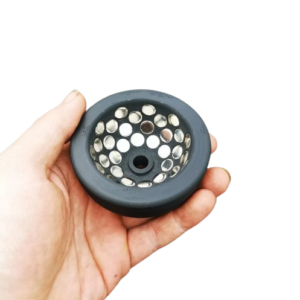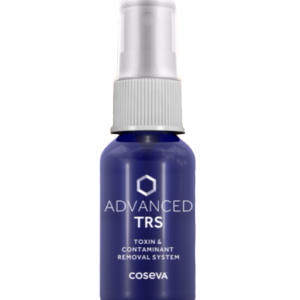To Kill or not to Kill Cancer: Why CBG might be better than CBD?
Protection
Cancer-killing, or cell reverting biology requires many functions to occur to operate, good job the body is so good at donig it’s job, science could never ever keep up with the full understanding of how things work in the body, you’de need a quantum super computer to compregend it.
Not only does cannabis curb cancer with a far less invasive tactic than chemotherapy, but it also helps your body recover at the same time.
Medicine that regenerates nerve tissue is rare and requires synergy with Cannabigerol, aka CBG, and your endocannabinoids. That synergy produces a complex system of neuro anti-inflammatories and anti-oxidants.
Neuroprotective properties are unleashed that will prevent further injury and promote healing by regulating tissue growth factors and cell death (apoptosis), inducing and inhibiting as needed.
Cancer is an excessive unregulated growth of damaged rebelious or captured cells. To prevent this growth, a few methods can be used – stopping the mutation from developing to slowing down the growth, as well as starving the mutated cells of oxygen and special blood cells. CBG can do all these and it can kill cancer as well.
Targeted cancer cell death
Cannabinoids like CBG will only induce cell death (apoptosis) in necessary circumstances, such as after irreparable mutation has already taken place. Strong evidence states they can assist in defeating skin, colon, and breast cancers by selectively promoting apoptosis in these cancerous cells.

CBG’s function is largely performed by agonizing peroxisome proliferator-activated receptors (PPAR) more efficiently than CBD.
These PPAR help genes transmit data as well as aid in tissue distribution. Through this, they directly mediate the development of tumours. PPAR’s also as function as commanders for your immune system.
Your bodies attack mode can be balanced by a mediated immune system.
A network of messengers and soldiers made up of different cells, like white blood cells, and cytokine proteins. Your body can easily be in an uncontrolled state of inflammatory assault which leads to mutations and ultimately cancer.
CBG acts like a powerful tactical commander and educator. It will ask your immune cells to think and act defensively before sending your cytokine army into battle.
This will stop your body from being assaulted and help your immune system target the actual condition.

A synchronicity between pain and joy
Immune system mediating effects are primarily associated with your endocannabinoid system.
CBG indirectly agonizes CB2 receptors and brings up 2-AG which promotes a therapeutic response. This will directly inhibit the development of cancer and slow its growth. There is more than one transmitter at play, though.
Cannabigerol also inhibits the degradation of the endocannabinoid, anandamide, with a unique and useful technique. CBG slows down anandamide’s metabolism by inhibiting a sensory transmitter, COX-2. This transmitter activates exclusively during trauma, injury, or just general pain. What is so special, is the type of inflammatory agent that anandamide turns into during these events, (prostaglandin lipids.)
Using controlled doses of cannabinoids can mediate an overwhelming shock to the system that can be brought on by injury or illness. Some sensation is required for the body to heal, though. CBG acts as a filter that keeps everything at a happy medium. No excessive inflammatory attack, just active enough to repair itself.
Phyto locks and endogenous keys

Furthermore, cannabigerol itself acts in a near mirror image to regenerative functions that are seen in anandamide. This countermeasure allows the destruction of tissues your body needs to get rid of, while the other side ensures recovery. Cellular repair is managed by anti-inflammation, anti-oxidation, and ultimately neuro-regeneration.
Many oxidative agents lead to cancer by excessively activating protein kinase pathways, ERK, MAPK, and cAMP, which your endogenous cannabinoid system will also mediate and keep balanced.
Healing cancer with homeostasis
Once CBG brings the signalling created from injury back to a moderate range, your body can start to use its defensive strategies. This includes the ability to suffocate unhealthy cells without going too far. CBG keeps things balanced enough so the fight won’t stop but it won’t damage anything it cannot repair – perfect homeostasis. The key is, while suppressing trauma just enough to stop unwanted damage, it simultaneously heals salvageable, healthy cells without leaving behind background mutations.
Cancer will be killed by an antioxidative function while good cell growth is up regulated.
CBG A Caution for Cancer: warning cytotoxic
Furthermore, expansive research is being conducted into efficiency on other cancers, including carcinoma and prostate. Testing cannabinoids in acute doseson a colon cancer-induced inflammatory response (prostaglandin release,) has actually failed. Cannabinoids are cytotoxic in these higher doses, to the point they performed unexpected cancer cell murder in the study. Essentially, the cannabis accidentally destroyed the study by killing the cancer cells they were using. Evidence has been shown that low doses expressed positive healing via lipid inhibition, leading to anti-inflammation.
CBG is the strongest active cannabinoid to put in the ring against these cancer types.
Diverging a degenerative deficiency
When used with CBD, it also acts as a key diverse action against Huntington’s Disease, a degenerative disorder whose initial symptom is a loss of cannabinoid receptor 1. Promising research has also been done on CBG derivates treating MS through neuroprotection; as well as investigations into the cannabinoids efficiency against Parkinson’s.

This overall self-regulation maximizes therapy and safety. CBG’s potential to regulate inflammatory mechanisms across several sites is positive – as an indirect CB2 agonist, ECs regulator, PPAR mediator, and a COX-2 inhibitor.
Another function of CBG may exist that is pivotal for specific anti-inflammatory methods. Watch for the next installment of this Cannabigerol series to learn how cannabis can add to menthol and cold packs.
Photo Courtesy of Herb.







